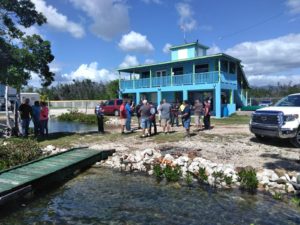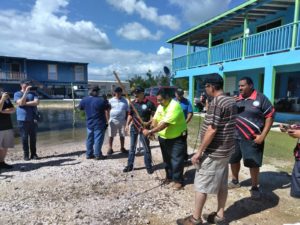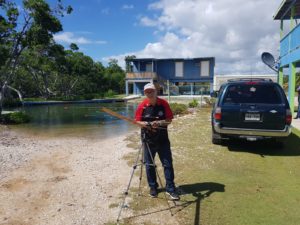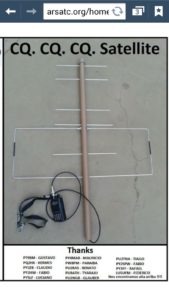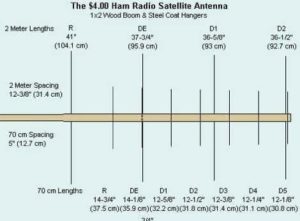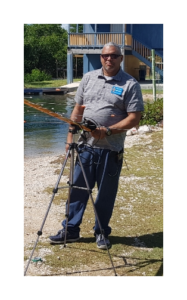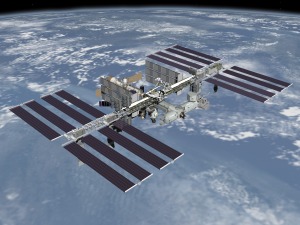Junte Satelital del Sur
Seminario Básico de Como Operar las Comunicaciones por Satélite

Esta actividad fue en salina 11 de noviembre 2018
Agradecemos al Sr Jose A Santiago wp4azt por prestar sus facilidades :
Damos las gracias a todos los que participaron y cooperaron en este taller satelital y esperando que se repita en otra ocacion:
El objetivo de este taller es que cuando salgan de aquí con el conocimiento necesario de como se opera una estación mediante un satélite
ʕQué es un satélite para radioaficionados?
Los satélites de radioaficionados son una de las áreas de la radioaficción que menos se practica porque hay la creencia de que los equipos necesarios son de alto costo y difíciles para operar pero no es cierto porque con un portátil y una antena de mano dual band casera, y un poco de preparación lo puedes lograr y operar correctamente
¿Cómo funciona un satélite?
Un satélite de radioaficionados funciona con una frecuencia de down link y una de up link.
La de down link es par recibir a señal del satélite y la de up link es donde usted va a transmitirle la desde su radio al satélite
¿Cómo orbitan los satélites?
Hay que tener en cuenta que los satélites de orbita baja se encuentran a 400 y 1,400 kilómetros de altura. A esa altura pueden cubrir aproximadamente a la mitad de Estados Unidos. Esa sombra del satélite permite que todos los que estén dentro de esa área se puedan comunicar entre ellos.
¿Cuántas veces pasa un satélite sobre nosotros?
Un satélite de orbita baja pasa por tu área alrededor de 4 a 5 veces al día. Cada vez que pasa su periodo de operabilidad es de 10 a 15 minutos y a veces varia y puede llegar a 20 como máximo.
¿Cómo funcionan los satélites de órbita elíptica?
Los satelites de orbita elíptica tienen otras características, su orbita tiene dos puntos claves. El mas cercano de conoce como perigeo y a la mas lejos se conoce como apogeo. En su apogeo una cara de la tierra está disponible para comunicación como lo fue e Oscar 13. cuando llegaba a estar a 38,000 km de distancia.
¿Cómo se donde está el satélite?, ¿cuándo pasará?
La predicción de las orbitas satelitales se hace por lo general con la ayuda de una computadora personal, no es la única manera pero hoy en día es la mas fácil. Los programas que su utilizan son diversos como por ejemplo Orbitron, AMSAT, Quick Track, Heavens Above Me. En esos programas tendrieas que velar si te da la hora local, UTC o militar los programas no solo indican y grafican cuando el satélite pasara tambien dan otros datos importantes como la elevación, altitud spbre el orizonte, sino también el Azimuth o posición respecto al los cuatro puntos cardinales (Norte, Sur, Este, Oeste).
¿Cuál es la mejor elevación?
La mejor elevación es 40 grados pero eso no quiere decir que no se puedan trabajar a otra elevación. Puedes trabajar los satélite después que sea dos grados hacia delante y no tengas obstrucción de algún objeto que te impidan la trasmisión.
¿Y en base a que información el programa hace estos cálculos?
Los programas de computadora para seguimiento de satélite se actualizan con una serie de datos sobre los satélites conocido como elementos Kepelianos que se consiguen en el internet. Existen dos tipos de formatos: NASA de dos líneas y AMSAT que es el mas fácil para entender y por lo mismo son mas largos. Es conveniente actualizar los elementos Kepleriano para evitar sorpresas.
¿Cuántos satélites hay?
Los satélites son casi igual que los seres humanos nacen, funcionan e inevitablemente mueren. La manera mas fácil de saber cuantos satelites están funcionando es visitar la pagina http://www.amsat.org ahí e indican con cuatro colores las categorías de los satélites en términos de cuales es s vida actual.
A.Operacionales
- semi operacionales
C no operacionales y los que estan esperando por lanzamiento al espacio.
- ¿Qué tipo de actividad encuentro en los satélites?
Hay satélites para todos los gustos y colores muchos de los modos que encontramos en las bandas tradicionales están en los satélites como banda lateral, telegrafía, FM y diferentes tipos de packets.En los satélites de orbita alta los DX son tan buenos como en 20 metros con buena propagación hay espacio para el que le gusta conversar y hacer nuevos amigos como para el experimentador y constructor de antenas en pocas palabras hay n espacio en los satélites para todos haciendo lo que nos gusta.¿Cómo puedo trabajar un satélite?Un satélite se trabajan dependiendo de sus características, los satélites de orbita baja y para voz son los mas fáciles de trabajar y casi todo radioaficionados comenzamos con ellos.¿Qué equipo necesito para trabajar un satélite? - Si quiero trabajar uno de estos satélites de FM. ¿Qué hago?
- Para trabajar estos satélites se requiere de:
- Primero. Debes conocer las frecuencias en donde hay que transmitir (subida al satélite) y recibir (bajada del satélite). Esto lo encuentras en la página que se menciona en el punto 10 de este documento.• Segundo. Hay que programar las frecuencias correspondientes en el equipo. Una ejemplo interesante al respecto es: http://home.comcast.net/~sllewd/vx7rsatellite.htm• Tercero. Hay que saber cuando va a pasar el satélite y por donde. Ver punto 7 de este documento. Esto es lo más critico del proceso. Es imposible hablar vía satélite si el satélite está del otro lado del mundo.
- Cuarto. Antes de querer transmitir es indispensable escuchar el satélite. Mueva tu antena en todas las direcciones, incluyendo el apuntar a la tierra, para ver si escuchas algo. Si no escuchas no transmitas, no tiene caso y seguramente perjudicarás a los demás.
-
- Quinto: Si logras escuchar el satélite transmite, si estas llegando hasta él te escucharas simultáneamente en la frecuencia de bajada. Para evitar que el sonido se vicie es conveniente operar con audífonos.
- Sexto: Es muy importante saber que los contactos en este tipo de satélites de FM son muy cortos. No hay que llamar CQ, es una pésima práctica. Lo único que se requiere es decir una vez tu indicativo, por ejemplo:
PY2NN
PY2NN – YV5YMA FK60NL
YV5YMA- PY2NN XXXXXX
- De acuerdo a esto no se requiere dar reporte de señal SOLO EL GRID, deletrear tu nombre y ubicación. Recuerda: hay más estaciones queriendo usar el satélite y solo hay una frecuencia para todos.• Séptima: Recuerda que la práctica hace al maestro. Si no sale a la primera no importa hay que intentarlo nuevamente
Autor a Editor
WP4NVZ
Aqui vemos algunos modelos hechos que son muy buenas antena
Colaboradores:
NP4RA
KP4JJ
ARSATC.ORG
American Radio Salinas P.R
Federacion Radioaficionados de Puerto Rico




